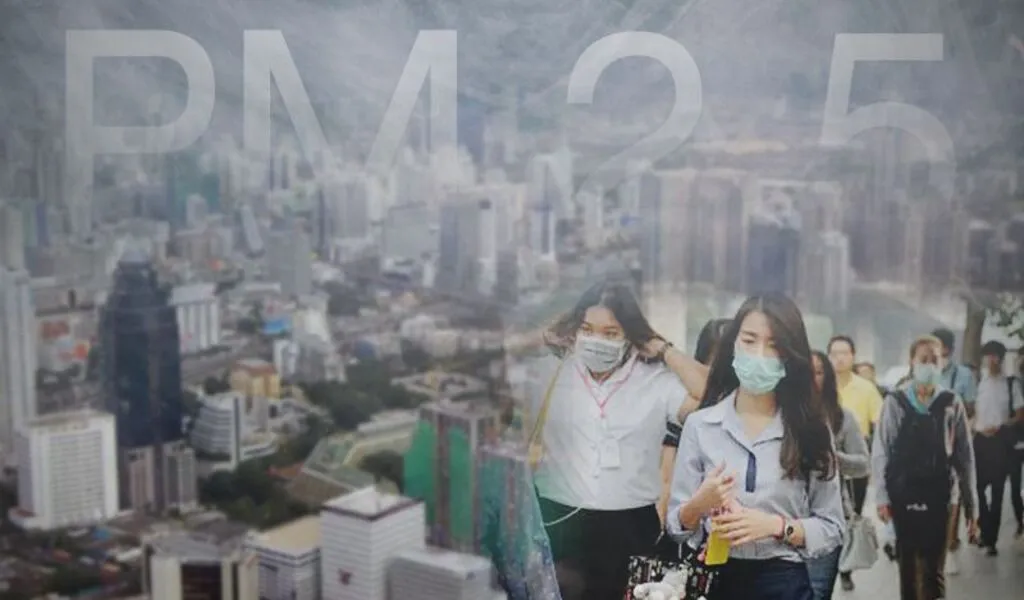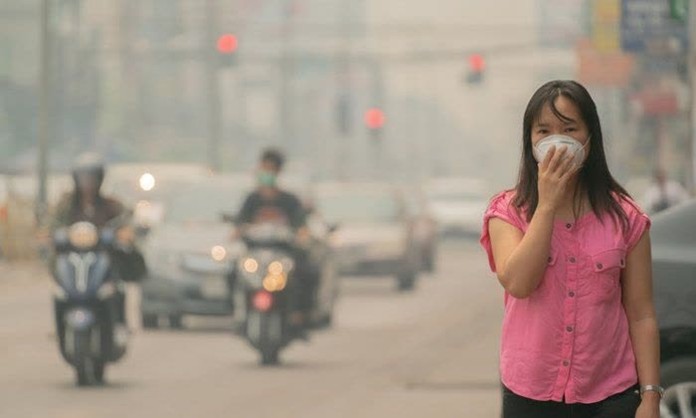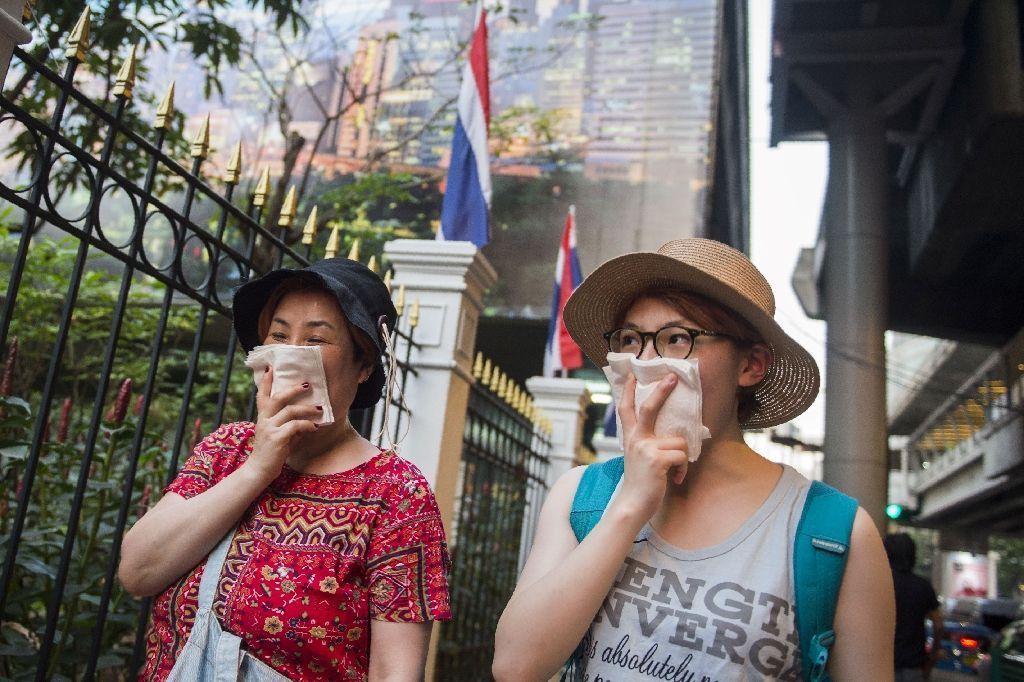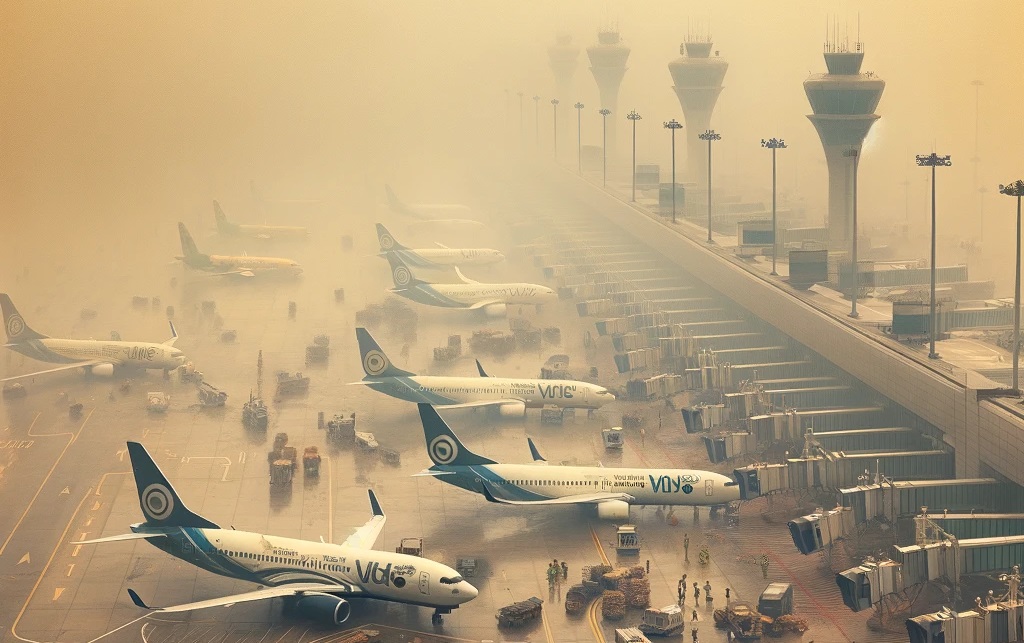All flights to and from Hanoi’s international airport in Vietnam were delayed or diverted to other destinations on Friday due to severe haze and worsening PM2.5 air quality, according to an airport spokesman.
According to Air Visual, an independent online air quality index monitor, the levels of harmful tiny particles known as PM2.5 in Hanoi’s air reached an all-time high of 257 micrograms per cubic metre early Friday.
“All incoming flights are being redirected to other cities, such as Haiphong and Danang. “No one can take off right now the haze is so this you can’t even see the Vietnam flag 100 meters away,” stated an Airport official who declined to be named.
State media stated that around 100 flights to and from the airport had been impacted, citing airport officials. Vietnam’s budget carrier Vietjet on Friday said many of its planes due to land in Hanoi had been diverted to land in Haiphong City.
Hanoi’s air pollution has consistently ranked among the highest in the world, with health officials last month encouraging people to wear masks and limit outside activity.

PM2.5 Air Quality in SE Asia
The air quality in Southeast Asia, specifically concerning PM2.5 particles, holds significant importance due to its profound effects on health and the environment.
With Southeast Asian cities consistently reporting high levels of air pollution, the impact on the population’s well-being cannot be understated.
Notably, data analysis from various sources reveals that PM2.5 concentrations in cities like Jakarta have exceeded safe levels, raising concerns about respiratory health and overall quality of life among residents.
The urgency to address and mitigate these pollution levels has become a top priority for the region’s environmental and public health authorities.
Understanding the real-time fluctuations of PM2.5 levels in Southeast Asia is crucial for implementing effective air quality management strategies and safeguarding the health of millions of individuals exposed to these harmful particles daily.
According to the Southeast Asia Fact Sheet by AQLI, the region has been grappling with high levels of PM2.5 pollution. Over the past two decades, pollution levels in Southeast Asia have persistently exceeded the WHO guideline for PM2.5 concentration.

Analysis of Air Quality in Southeast Asian Cities
Studies analyzing air quality in major Southeast Asian cities reveal concerning findings. Cities like Jakarta, Singapore, and Bangkok have been consistently recording high levels of PM2.5 pollution.
Research by WRI Indonesia indicates that Jakarta has experienced a worrisome monthly average concentration of PM2.5 in recent years, highlighting the detrimental impact of air pollution on urban populations.
In Bangkok, the Air Quality Index (AQI) frequently fluctuates between moderate to unhealthy levels, posing risks to public health.
Despite ranking cleaner than some capital cities, Singapore still faces challenges with PM2.5 air pollution, emphasizing the need for continuous monitoring and mitigation strategies to safeguard air quality and public health in urban centres.
The data paints a vivid picture of the air quality challenges faced by Southeast Asian cities, urging stakeholders to take decisive action to combat air pollution and strive for cleaner air for all residents.

Effects of PM2.5 on Respiratory Health
When we inhale air contaminated with PM2.5 particles, our respiratory system can bear the brunt of the pollution. These tiny particles can penetrate our lungs, leading to irritation, inflammation, and potential long-term damage.
Individuals exposed to elevated PM2.5 levels are at a huge risk of developing respiratory issues such as asthma, bronchitis, and other respiratory conditions.
For those already suffering from respiratory ailments, PM2.5 can exacerbate their symptoms, making breathing more challenging and triggering discomfort.
Besides respiratory health, prolonged exposure to PM2.5 is also associated with a higher risk of heart diseases. Studies have shown a concerning link between PM2.5 exposure and cardiovascular problems like heart disease and stroke.
The fine particles of PM2.5 can enter the blood through the lungs, causing inflammation and oxidative stress and potentially leading to the development or exacerbation of cardiovascular issues.
The issue of PM2.5 air quality in Southeast Asia is a pressing concern that
cannot be ignored. With pollution levels remaining high for the past two decades in the region, the health and well-being of millions of people are at risk.
It is crucial to address this issue not only for public health but also for the sustainability of the environment. The monthly average concentration of PM2.5 in cities like Jakarta is alarming, highlighting the need for immediate action to improve air quality.
Vietnam’s Digital Renaissance






